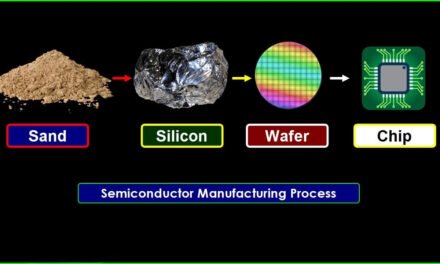Transformers play a crucial role in the transmission and distribution of electricity by facilitating the efficient transfer of electrical energy over long distances. Their primary function is to change the voltage levels of alternating current (AC) to ensure that power can be transmitted efficiently and safely across vast distances and then distributed to homes and industries. Here’s how transformers contribute to this process:
1. Step-Up Transformers (Increase Voltage for Transmission)
- Function: Step-up transformers increase the voltage of electricity generated at power plants before it is transmitted over long distances.
- How it Works:
- Power plants generate electricity at a relatively low voltage (typically between 10 kV and 30 kV).
- A step-up transformer is used to raise this voltage to a much higher level, typically between 110 kV to 765 kV or more, depending on the transmission system.
- The high voltage reduces the current flowing through the transmission lines, which helps minimize energy losses due to the resistance of the transmission wires.
- Importance in Transmission:
- Efficient Long-Distance Transmission: Higher voltage and lower current allow electricity to be transmitted over long distances with minimal energy loss.
- Reduced Energy Loss: When the voltage is raised, the current is reduced, which decreases the heat generated in the transmission lines (resistive losses are proportional to the square of the current).
- Example: A step-up transformer at a power plant might increase the voltage from 20 kV to 400 kV before the electricity is sent over high-voltage transmission lines.
2. Step-Down Transformers (Lower Voltage for Distribution)
- Function: Step-down transformers are used to lower the voltage of electricity before it is distributed to consumers.
- How it Works:
- Once high-voltage electricity has been transmitted to local substations, step-down transformers reduce the voltage to a level that is suitable for use by homes and businesses.
- The voltage is typically reduced to 11 kV (for local distribution) and then further lowered to 220 V or 110 V for household use.
- Importance in Distribution:
- Safe and Usable Power: The voltage needs to be reduced to a safe level to power appliances and devices without damaging them.
- Effective Distribution: Step-down transformers ensure that power can be distributed efficiently to end-users without losing too much energy. The voltage is matched to the needs of local consumption.
- Example: A step-down transformer might reduce the voltage from 110 kV (in a substation) to 11 kV for regional distribution or down to 230 V for residential homes.
3. Voltage Regulation
- Function: Transformers help maintain stable voltage levels throughout the transmission and distribution process.
- How it Works:
- Regulation: Transformers are designed to handle voltage fluctuations in the system, ensuring that the output voltage remains within a specified range. This is crucial for the stability of the grid and to prevent damage to electrical equipment.
- Some transformers, known as tap-changing transformers, have adjustable tap settings that allow the voltage to be fine-tuned to meet changing load conditions or grid demands.
- Importance in Grid Stability:
- Ensures Stable Power Supply: Maintaining consistent voltage levels helps to ensure that electrical equipment operates efficiently and prevents overvoltage or undervoltage conditions.
- Handles Load Variations: Transformers help manage fluctuations in demand by adjusting voltage as needed.
4. Energy Loss Minimization
- Function: Transformers help minimize energy losses during the transmission process, which is essential for the efficiency of power systems.
- How it Works:
- High-voltage transmission reduces the amount of energy lost as heat due to resistance in transmission lines.
- Since resistive losses (I²R losses) increase with the square of the current, lowering the current by using higher voltage minimizes these losses significantly.
- Importance in Cost-Effective Transmission:
- Reduced Losses: By reducing losses during transmission, transformers help utilities deliver electricity to consumers more cost-effectively.
- Less Need for Additional Power Generation: Efficient transmission means that power plants don’t need to generate as much electricity to compensate for losses, thus reducing overall energy consumption and environmental impact.
5. Isolation and Safety
- Function: Transformers provide electrical isolation between different parts of the power grid, which enhances safety and system protection.
- How it Works:
- In certain cases, transformers can isolate electrical circuits from each other by preventing direct electrical connections, which helps protect sensitive equipment and personnel from high voltages.
- Importance in Safety:
- Prevents Electrical Short Circuits: Transformers ensure that the power on the transmission side is separated from the distribution side, reducing the risk of electrical shorts or faults.
- Protects Equipment: Isolation protects electrical devices from surges, spikes, or other irregularities that could damage them.
6. Role in Renewable Energy Integration
- Function: Transformers are also key in integrating renewable energy sources, such as solar and wind power, into the electrical grid.
- How it Works:
- Renewable energy sources like solar panels and wind turbines typically generate electricity at lower voltages (DC or AC).
- Transformers help convert and step-up the voltage for transmission and distribution, enabling the integration of renewable energy into the grid alongside traditional power sources.
- Importance in Clean Energy Integration:
- Grid Compatibility: Transformers enable renewable energy plants to connect to the larger grid by converting the generated electricity into the required voltage levels.
- Efficient Transmission: Just as with conventional power plants, transformers help minimize losses during the transmission of renewable energy.
7. Substations and Transformer Stations
- Function: Substations and transformer stations are the key locations where transformers are placed to manage voltage levels at various stages of the power grid.
- How it Works:
- Power plants, transmission lines, and local power networks rely on substations equipped with transformers to manage and adjust voltage levels.
- These substations act as hubs where electricity is received, transformed, and distributed according to the demand and requirements of the region.
- Importance in Power Management:
- Efficient Power Flow: Substations with transformers help control the flow of electricity to prevent congestion and maintain grid balance.
- Distribution to Consumers: These stations ensure that electricity is appropriately distributed to areas that need it, whether for residential, commercial, or industrial use.
Conclusion
Transformers are indispensable in the transmission and distribution of electricity, making long-distance energy transfer feasible and safe. They enable the efficient transmission of electrical energy by stepping up the voltage for low-loss long-distance travel and then stepping down the voltage for safe, practical use by consumers. By minimizing energy losses, stabilizing voltage, ensuring safety, and integrating renewable energy, transformers are central to the modern electrical grid, helping deliver reliable and cost-effective electricity to homes, businesses, and industries.
Hashtags
#StepUpTransformers #VoltageStepUp #PowerTransmission #HighVoltageTransmission #EfficientEnergyTransfer #PowerGrid #ElectricityTransmission #LongDistancePowerTransfer #StepUpForGrid #StepDownTransformers #VoltageStepDown #PowerDistribution #LocalPowerSupply #VoltageReduction #SafePowerDelivery #GridVoltageConversion #LowVoltageDistribution #ElectricitySafety #TransformerStations #SubstationTransformers #PowerSubstations #ElectricalGridSubstations #EnergyDistributionPoints #ElectricitySwitchingStation #PowerConversionStations #PowerTransformers #HighPowerTransformers #GridPowerTransformers #EnergyTransmissionInfrastructure














